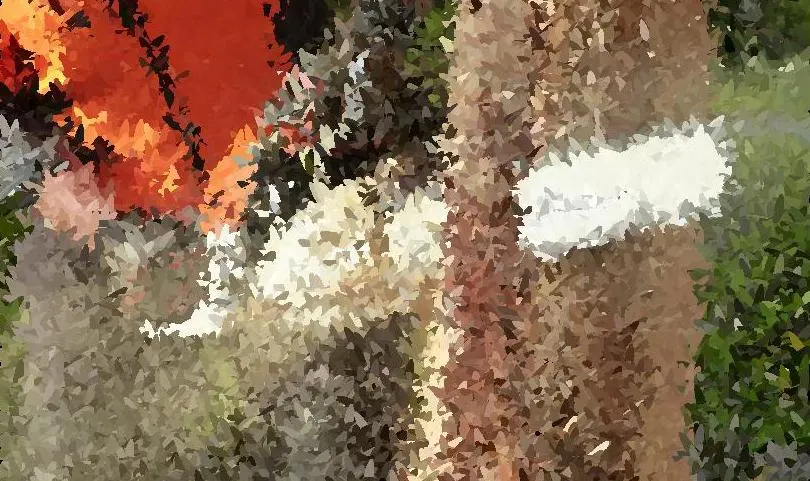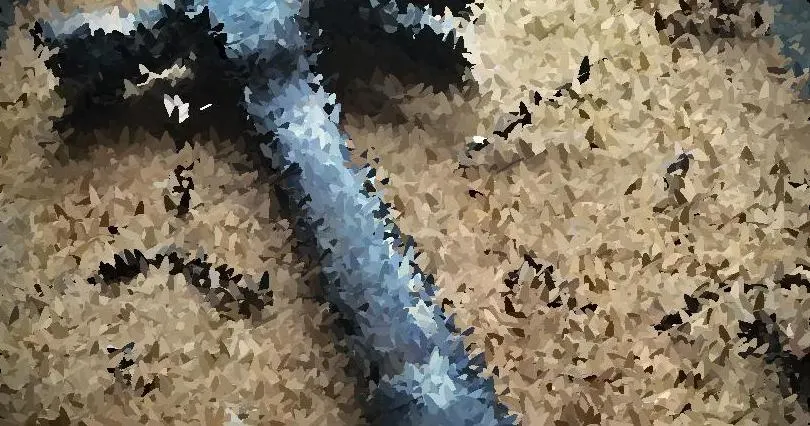Chainsaws are a heavy-duty tool, and they can handle pretty much any wood cutting job easily. But when working with wood that has been used in construction or has been part of a structure previously, it is very common to find nails in such types of wood. So what happens to a chainsaw if it comes in contact with nails when cutting through the wood?
Can a chainsaw cut through nails?
If chainsaw teeth occasionally come in contact with a nail hidden inside the wood, it can cut through the nail but not without consequences. Every time your chainsaw accidentally cuts a nail, this metal-on-metal contact will cause the chainsaw’s teeth to become dull prematurely. But there are heavy-duty chainsaws available with crystals of carbide embedded or full-out carbide-tipped chains that can handle cutting an occasional nail inside the wood without any problem.

Chainsaws are a powerful cutting tool, and they can make it relatively easy to chop down wood into smaller pieces. With that being said, you are bound to find nails even in freshly cut trees. So if you have to cut wood that commonly contains lots of nails, this article is for you because we will tell you about what type of chainsaws can cut through nails and how you can avoid cutting nails with a chainsaw in the first place.
Contents
What type of chainsaw can cut through nails?
For people who work with old lumber, it can become difficult to avoid cutting nails hidden inside the wood when using a chainsaw. Therefore it is very important to know what type of chainsaw you can use to cut through nails without damaging the blades or the motor itself. Chainsaws are generally divided into two major categories which are:
- Home use chainsaws
- Commercial chainsaws for professionals
● Domestic-use Chainsaws:
As the name suggests, this type of chainsaws is meant to be used for light chopping and cutting and is mostly used to trimming the branches of trees in the yard. These types of chainsaws are mostly electric-powered, and they can either have rechargeable batteries for cordless usage, or they can have a cord that you need to plug in before you can use the chainsaw, but they also come with small gas engines. Home use chainsaws cost less than $500, and they are not very powerful, not to mention their chain and blades are not made with reinforced material which means they can’t handle cutting nails and can get dull or damaged if they come in contact with nails while cutting wood. As we mentioned earlier, even if you can get away with cutting one or two nails with a home-use chainsaw, there is no guarantee that your luck will work every time because domestic chainsaws are just not designed to handle such abuse.

So the only option you have, if you are using a chainsaw meant for home use, is to make sure there are no nails in the wood before you start cutting it. Because there is a high possibility that the chain of a light-duty home use chainsaw can break while cutting a nail inside a log and injure the person operating the chainsaw or someone standing nearby. The upside to home-use chainsaws is that they are lighter, and since they are electric-powered, they are hushed machines, and those with a gas-powered engine are not too loud either because the engine is usually pretty small. But when it comes to cutting wood with a lot of nails, home-use chainsaws are not recommended.
● Commercial or Professional-use Chainsaws:
If you live in the countryside or work in the construction industry, then a commercial use chainsaw is the right tool for you. In addition to having a powerful engine, these heavy-duty chainsaws have durable and reinforced teeth that allow you to cut through nails and other metal particles stuck inside the wood. There are still limitations to how much abuse a chainsaw blade can take before it starts to show signs of dullness but cutting an occasional nail here and there is not going to cause any problems if you own a commercial chainsaw. These chainsaws are mostly gas-powered and have 2 stroke engines that provide plenty of power to cut through nails. Some commercial chainsaws are even equipped with chains that have carbide teeth which makes them virtually indestructible.
The downside of commercial chainsaws is that they are extremely noisy and require a lot of maintenance as well. Not to mention they are heavy machines and require a lot of strength to handle properly.

How to detect nails in wood?
Prevention is the best cure, and obviously, it is best to avoid cutting through nails all together to prevent your chainsaw blades from getting dull prematurely. Besides, it is safer not to cut nails altogether since it produces many sparks when chainsaw blades hit the nail, which can cause a fire. Nails are not only found in old lumber, in fact, but it is also widespread to find nails and other metal pieces inside tree logs as well. Nails and other metal items get into logs because trees continue to grow around metal objects, causing the metal to get embedded into the tree. And when an unsuspecting chainsaw blade comes in contact with a hidden nail or wire inside the log, it can damage its teeth and even ruin the motor completely. But there are a few ways you can tell if there are nails inside wood or not:
● By Visual Inspection:
Once you have selected the tree or a piece of wood to cut, pay close attention to the surface of the wood, and look for any holes. Also, make sure that there aren’t any unusual bumps on the surface of the wood or the tree bark because it can indicate that the tree has been growing on top of a nail that was hammered into it. If you are about to cut a tree, look for any posters on the tree because chances are the poster is held to the tree using nails, and you can pull them out before cutting the tree down. Nails are usually hammered at the height of 5-10 feet on the tree, so you should always pay close attention when cutting the tree at this height. You can also look around the tree before cutting it, and if there is a fence attached to a tree, then chances are the tree might have grown around the metal fence, and there can be some pieces of metal fence still inside the tree that can ruin a chainsaw.
● Using Magnets:
Another great way to detect nails inside wood removed from a house or other structures is by using a powerful magnet. Rare earth magnets are some of the strongest permanent magnets, and they are perfect for detecting nails inside the wood. All you have to do is tie the magnet to a string or fishing line and swing it near the surface of the wood. Swing the magnet along the complete length of the wood, and if the magnet attaches to the wood, it is a sign that there is either a nail or some similar metal object under the surface of the wood. This method can help you find a metal object buried a few inches under the surface of the wood.
● Using a Metal Detector:
This is the most reliable way to detect nails or other metals buried in the wood. Metal detectors are devices that allow you to detect metals that can be hidden several feet under the surface, making them perfect for finding nails in wood. Two types of metal detectors are traditionally used to detect items under the ground and the handheld ones. The bigger metal detectors that you typically see are great for finding a deep inside a piece of wood because they are more powerful than the handheld ones. But the handheld metal detectors are light and easy to use, and you can use them on the tree before cutting them. Either way, you can easily detect nails in wood using a metal detector, and this method will make sure that there aren’t any nails left inside wood that can damage your chainsaw.
Final Remarks
Chain saws might seem indestructible, but the truth is even a tiny nail can ruin your expensive cutting tool, and repairing a bad chainsaw motor or replacing the blades can be expensive. Therefore it is best to use the right kind of chainsaw if you think there are nails and other metals inside the wood. While not all chainsaws can cut through nails, heavy-duty commercial chainsaws are specially designed for this purpose, and you should use them instead of light-duty domestic chainsaws if you want to cut wood that has a lot of nails embedded in it.

Is there a specific technique to use when cutting wood that may contain nails?
Thank you for your question, Gina. To cut wood with nails, it is best to use a heavy-duty chainsaw with carbide-tipped teeth that can handle metal-on-metal contact without damaging the blade.
Is it common to find nails in freshly cut trees?
“Common in older trees. Chainsaws can cut through nails but will dull teeth prematurely. Heavy-duty chainsaws with carbide teeth can handle nails. Prevent by visually inspecting wood or using magnets.”
Can you use a metal detector to find nails in wood before cutting with a chainsaw?
Yes, a chainsaw can cut through nails, but it will dull the blades. It’s best to avoid cutting nails altogether to prevent damage. Consider using a heavy-duty chainsaw made for cutting through nails.
What are some other metal objects that can be found in wood besides nails?
Hi Charles, some other metal objects that can be found in wood besides nails are screws, staples, and bolts. These can all potentially damage a chainsaw if they come in contact while cutting.
Why is it important to know how to detect nails in wood before using a chainsaw?
“It’s crucial to know what chainsaw to use when cutting wood with nails. Light-duty chainsaws can’t handle nails and may get damaged. Stick to heavy-duty chainsaws for that job.”
Can chainsaws be repaired if they get damaged by cutting nails?
Hi Doris! Chainsaws can cut through nails, but it’s not recommended as it can damage the teeth. Consider using heavy-duty chainsaws with carbide teeth for cutting wood with nails.
What are the consequences of cutting nails with a chainsaw?
Thank you for your question Crystal! Chainsaws can cut through nails but at the expense of the chain becoming dull. It’s best to use a heavy-duty commercial chainsaw for that job.
How to detect nails in wood?
Hi Courtney! To detect nails in wood, a metal detector or a strong magnet can be used to ensure your chainsaw blades stay sharp. Avoiding nails altogether is the safest option.
Are there any safety hazards associated with cutting nails with a chainsaw?
It is not safe to use a chainsaw to cut through nails, as it can damage the teeth of the chainsaw prematurely. It’s best to avoid nails altogether to prevent any harm to the chainsaw.
Can a chainsaw cut through nails?
Thank you for your question! Yes, a chainsaw can cut through nails, but it will cause the teeth to dull prematurely. Consider using a heavy-duty chainsaw with carbide teeth for cutting wood with nails.
Can nails cause a fire when cutting wood with a chainsaw?
Yes, it’s possible for a chainsaw to cut through nails but it can dull the teeth. Consider using a heavy-duty chainsaw designed for cutting nails in wood.
How can cutting nails with a chainsaw affect the overall performance of the tool?
Hi Marvin, cutting nails with a chainsaw can dull the teeth prematurely. Consider using a heavy-duty chainsaw with carbide teeth for occasional nail encounters. Thanks for your question!
Can home-use chainsaws handle cutting nails?
Hi Terra, chainsaws can cut through nails, but it can dull the teeth quickly. Look for heavy-duty chainsaws with carbide teeth for cutting nails in wood. Make sure to inspect wood for nails before cutting.
What type of chainsaw can cut through nails?
Thank you for your question, Frances! Chainsaws with carbide-tipped chains are best for cutting through nails without damaging the blades. Be sure to handle them with care!
What are the limitations of commercial chainsaws when cutting nails?
To Kitty Wood: Heavy-duty commercial chainsaws equipped with carbide teeth can cut through nails without damaging the blades. It’s best to avoid cutting nails altogether to prevent blade dullness.
What are the advantages of using a heavy-duty chainsaw when cutting wood with nails?
Hi Lloyd, Heavy-duty chainsaws have carbide teeth that can handle cutting through nails with no problem. Just make sure to stay away from nails while using a chainsaw meant for light chopping. Hope this helps!
Can you use a metal detector to find nails in wood before cutting with a chainsaw?
Thank you for your question, Nora! Yes, a chainsaw can cut through nails, but it’s best to avoid it as it can dull the blades. Consider using a heavy-duty chainsaw with carbide teeth for occasional nail encounters.
How can you prevent nails from damaging a chainsaw when cutting wood?
If you’re working with wood containing nails, consider using a commercial chainsaw with reinforced teeth to prevent damage. Happy cutting!
Are there any specific signs that indicate the presence of nails in wood?
Thank you for your question, Frances. Nails in wood can dull chainsaw blades prematurely. Look for bumps or use a magnet to detect nails before cutting. Be cautious!
Do chainsaw blades get dull when cutting nails?
Hi Scarlett! Yes, chainsaw blades can get dull if they encounter nails while cutting wood. It’s best to use a heavy-duty chainsaw with reinforced teeth to prevent damage. Hope this helps!
What should someone do if they accidentally cut a nail with a chainsaw?
“Use a chainsaw with carbide teeth for cutting nails. Avoid cutting nails to prevent damage. Check wood visually, use magnets, or a metal detector to detect nails. Stay safe!”